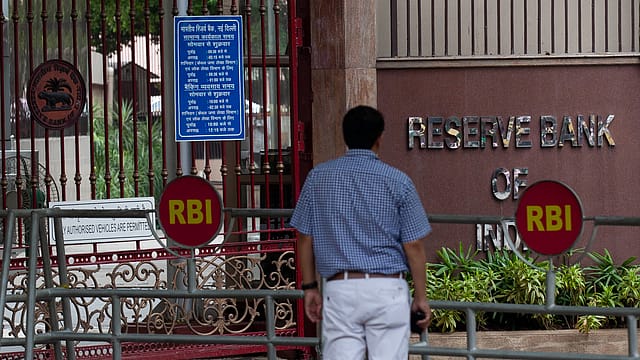RBI says state debt levels unsustainable; Punjab worst hit
ADVERTISEMENT

The Reserve Bank of India (RBI) has cautioned that the fiscal conditions among states are showing warning signs of building stress, highlighting the need to undertake significant corrective steps to stabilise their debt levels.
The slowdown in own tax revenue, a high share of committed expenditure and rising subsidy burden have stretched state government finances exacerbated by the Covid-19 pandemic, the central bank says in its June 2022 bulletin.
For the five most indebted states, the debt stock is no longer sustainable, as the debt growth has outpaced their gross state domestic product (GSDP) growth in the last five years, the RBI says.
"New sources of risks have emerged — relaunch of the old pension scheme by some states; rising expenditure on non-merit freebies; expanding contingent liabilities; and the ballooning overdue of discoms — warranting strategic corrective measures," the central bank adds.
In India, sub-national finances have deteriorated significantly in 2020-21 though there is considerable variation in the vulnerability of individual states.
Punjab is expected to remain in the worst position as its debt-GSDP ratio is projected to exceed 45% in 2026-27, with further deterioration in its fiscal position, the RBI warns. The newly elected state government has announced 300 units of free electricity from July 1 to every household.
January 2026
Netflix, which has been in India for a decade, has successfully struck a balance between high-class premium content and pricing that attracts a range of customers. Find out how the U.S. streaming giant evolved in India, plus an exclusive interview with CEO Ted Sarandos. Also read about the Best Investments for 2026, and how rising growth and easing inflation will come in handy for finance minister Nirmala Sitharaman as she prepares Budget 2026.
Rajasthan, Kerala and West Bengal are projected to exceed the debt-GSDP ratio of 35% by 2026-27.
Stress tests show that the fiscal conditions of the most indebted state governments are expected to deteriorate further, with their debt-GSDP ratio likely to remain above 35% in 2026-27, the banking regulator says.
Citing the economic crisis in Sri Lanka, the RBI cautioned that the sovereign debt crisis in India's neighbourhood is a stark reminder of the importance of bringing government finances on a sustainable path after the prolonged Covid-19 crisis.
Old pension, new subsidies
The recent reversal of positions on the old pension scheme by Rajasthan and Chhattisgarh has reignited the debate about the pros and cons of the old pension scheme versus the New Pension Scheme (NPS), with a few more states reportedly contemplating similar steps.
Pension expenditure alone accounts for 12.4% (average of 2017-18 to 2021-22) of total revenue expenditure of the 10 most indebted states, according to the RBI.
As per the latest available data from the Comptroller and Auditor General of India (CAG), the state governments' expenditure on subsidies has grown at 12.9% and 11.2% during 2020-21 and 2021-22, respectively, after contracting in 2019-20. The share of subsidies in total revenue expenditure by states has also risen from 7.8% in 2019-20 to 8.2% in 2021-22.
While putting the spotlight on fiscal risks confronting state governments in India, the RBI says these states must restrict their revenue expenses by cutting down expenditure on non-merit goods in the near term.
In the medium term, these states need to put efforts towards stabilising debt levels. Further, large scale reforms in the power distribution sector would enable the discoms to reduce losses and make them financially sustainable and operationally efficient, the RBI says.
In the long term, increasing the share of capital outlays in the total expenditure will help create long-term assets, generate revenue and boost operational efficiency, it adds.
